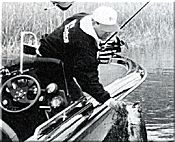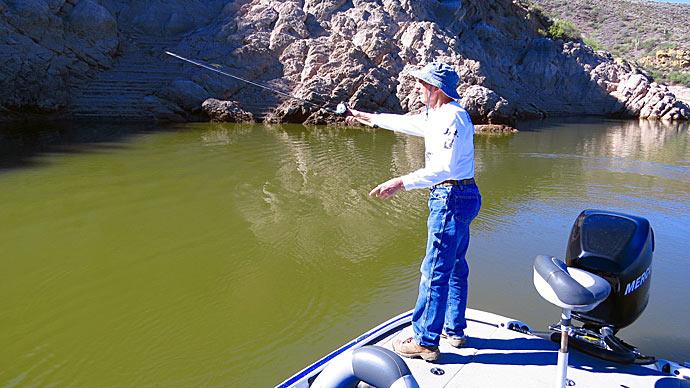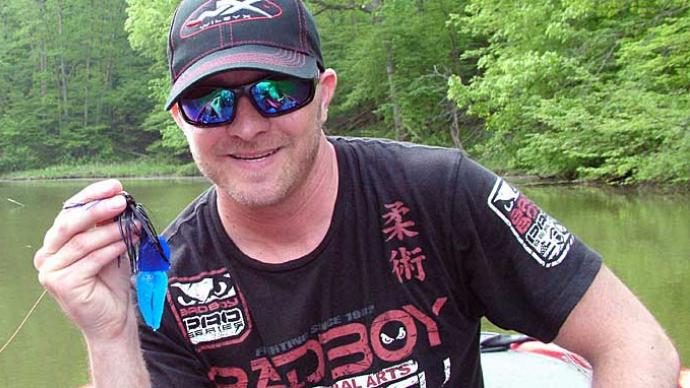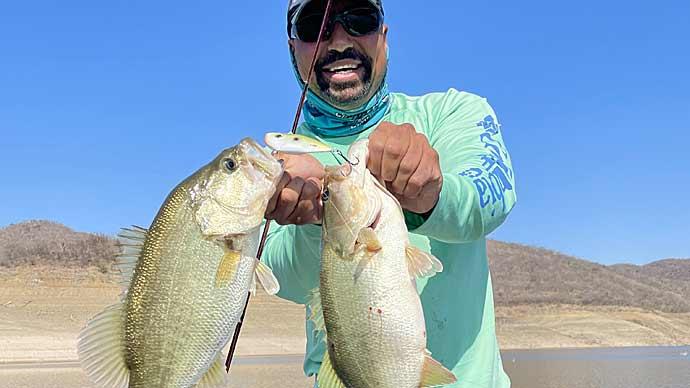
We all enjoy our time on the boat, whether it's just a few hours fishing for fun or spending 10 hours a day in a tournament. Chances are after this you spend another two or three hours driving home. After all this we have all said many times, "Oh! My aching back." It would be nice if there were a magic pill to take to eliminate this, but no such luck. However, there are a few simple things we can all do to at least minimize our back pains after a day on the water.
We have a place on Possum Kingdom (Texas) and fish about five or six open tournaments there as well as our Honey Hole Team circuit. I had pre-fished on Saturday in early March and found out it was time to replace the three-year-old batteries in my Stroker. They had run out of "umph" about 2:30 and I knew this wouldn't work on tournament day. So I proceeded to unbolt and remove my batteries for the trip to town, so I could avoid the $3.00 non-return disposal tax. I reached over the battery compartment, while standing on the rail of the trailer and lifted the first battery up then turned to sit it down and just felt a little burn in my lower back.
I then proceeded to clean out all of the tired and discarded lures that had accumulated in the rod boxes. I spent a good hour bent over untangling, sorting and putting these things away. Little did I know that I had just broken two major rules of keeping my back from giving me trouble.
The next day after standing on one foot, leaning on the butt seat, and pitching and casting for 10 hours, my lower back had 100 percent of my attention. I then drove my half of the five-hour trip home. Needless to say things weren't better by Tuesday. I was hunting some relief. I called a local doctor and he got me right in. After X-rays revealed a simple bulging disk, not to serious, he went to work performing more magic than those two old boys in Las Vegas. Well, two more trips to him that week and I thought I felt good enough to fish the next weekend, and did.
Monday morning I'm back in there saying, "What can I do to make this go away." He said the main cause was the muscles that support the spine have got to be strong enough to support your spine, yet flexible enough not to cause you pain. As it turns out he, too, was a fisherman and knew what we put our bodies through to catch the fish of a lifetime, catch some for the table or put a few bucks in our pockets. He told me the shoes I wear while on the boat probably represent 60 percent of my problems and the other 40 percent is likely to be because I'm too lazy to exercise properly.
I said, "Yes, but that's not going to help my back."
"I tell you what," he said, "you go buy the shoes I tell you to. I'll show you some exercises you can do in about 10 minutes before you go to work or before you get on the boat and you go buy a good back-support belt and use it. Your problems should go away."
At that point my back pain still occupied about 30 percent of my concentration so I said, "Deal." Here's the scoop...
The shoes
We all buy shoes to fish in that are comfortable and this counts, but there is such a thing as comfort and providing the proper support for your back. The way our feet contact the ground, and in our case the deck of the boat, is important. My doctor recommended Rockport brand of shoes. They make a Pro Walker model with a special DMX catalyst insole. These insoles have an air transfer system, which distributes the load evenly and provides the support as well as comfort we all expect.
When we think of "doctor recommended shoes" we all have visions of some orthopedic looking apparatus. This is not the case, these shoes look like the low-top tennis shoes we all already wear. Rockport has about five or six models in all colors available in the Bass Pro Shops outdoor stores, some mail order catalogs, and in a few exclusive footwear outlets. They usually handle several other brands, which are probably good. It's just that the Rockports I bought do an excellent job and I have not had any further problems since I started wearing them. They are expensive at $90 or more per pair, but what's it worth to have less or no back pain at the end of a day of fishing?
The back-support belt
The back belt you select needs to provide support in your lower back area with either carbon fiber or metal stays in the low back area. Then the elastic straps have to be strong enough to hold you straight. Last and most important, it's got to be light colored, cool and comfortable so you will leave it on. The one I selected came from our local Academy Sports & Outdoors store. They carry several different models and brands, but remember the old rule of don't buy the cheapest and expect it to be the best applies.
The exercises
Last, and probably most important is the exercise. We sincerely appreciate the help of Dr. Neil Veggeberg of the High Plains Rehabilitation Center, which specializing in these types of problems. In Dr. Veggeberg's own words, he says, "The last thing your back needs, or wants, is a sudden drastic change in activity level. If you have a sedentary job and then over the weekend, fish standing up for eight hours straight it can put an inordinate strain on your back. The solution is to either fish more often (eight hours a day, three days a week) or to work on some exercises to keep your back limber and strong.
The first thing that happens to people in a sedentary job is that they tend to get bent forward at the waist. The reason for this is that as we age the disk spaces narrow. This tends to throw our spine forward. Also, in a sitting position the hip muscles tend to get contracted in a flexed position. In order to keep this problem to a minimum there are a series of exercises you can do three times a day.
First, get a two by six that's about a foot and a half long. Keep it in your office. Do 10 repetitions by placing your fore foot on front of the board and stretching the Achilles tendon.
Next, go up to a smooth wall, place your back against the wall and slide down then back up about five inches. Do this 10 times. Then get on your hands and knees. Arch your back up and down about 10 times, like a cat. Finally, lie down like you're going to do a push up, then do a push up with your hip still on the ground to stretch the hip. Do 10 of these.
Finally, while you're fishing, make sure to stand with one leg elevated about four inches higher than the other, on a block. About every 15 minutes switch legs. At about one-hour intervals try to take a five-minute break with an alternative activity, such as walking or sitting. Make sure you keep your back in a neutral position (standing up straight) and try to avoid bending forward at your waist for long periods of time.
I've got to say before we close that these ideas and suggestions are in no way meant to keep you from seeing your doctor or chiropractor. As I stated, these people can, and do, work magic when you need to be under their care. I know mine sure helped me. Just don't rely totally on my suggestions. They are meant to keep you from having to go, not to keep you away if you are hurting and in need of professional assistance.
I want to say a special thanks to Dr. Neil Veggeberg of Amarillo for his help. Until next time smooth water and create your own luck.




